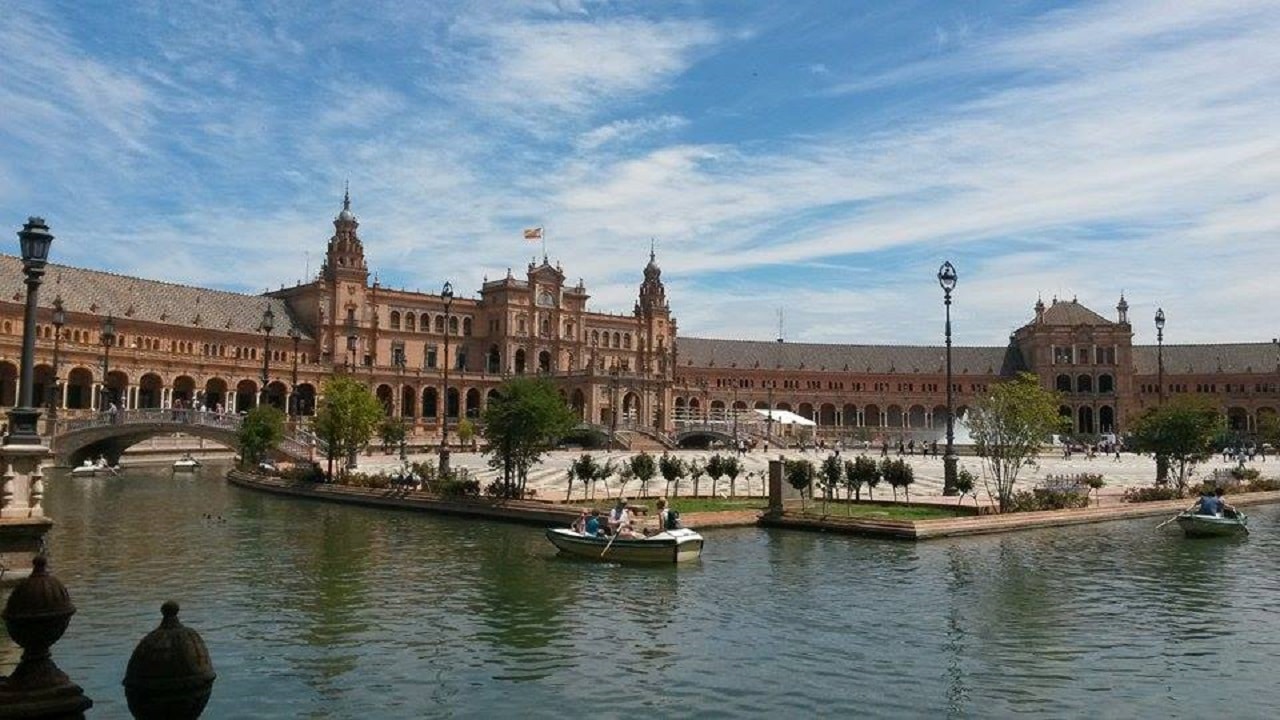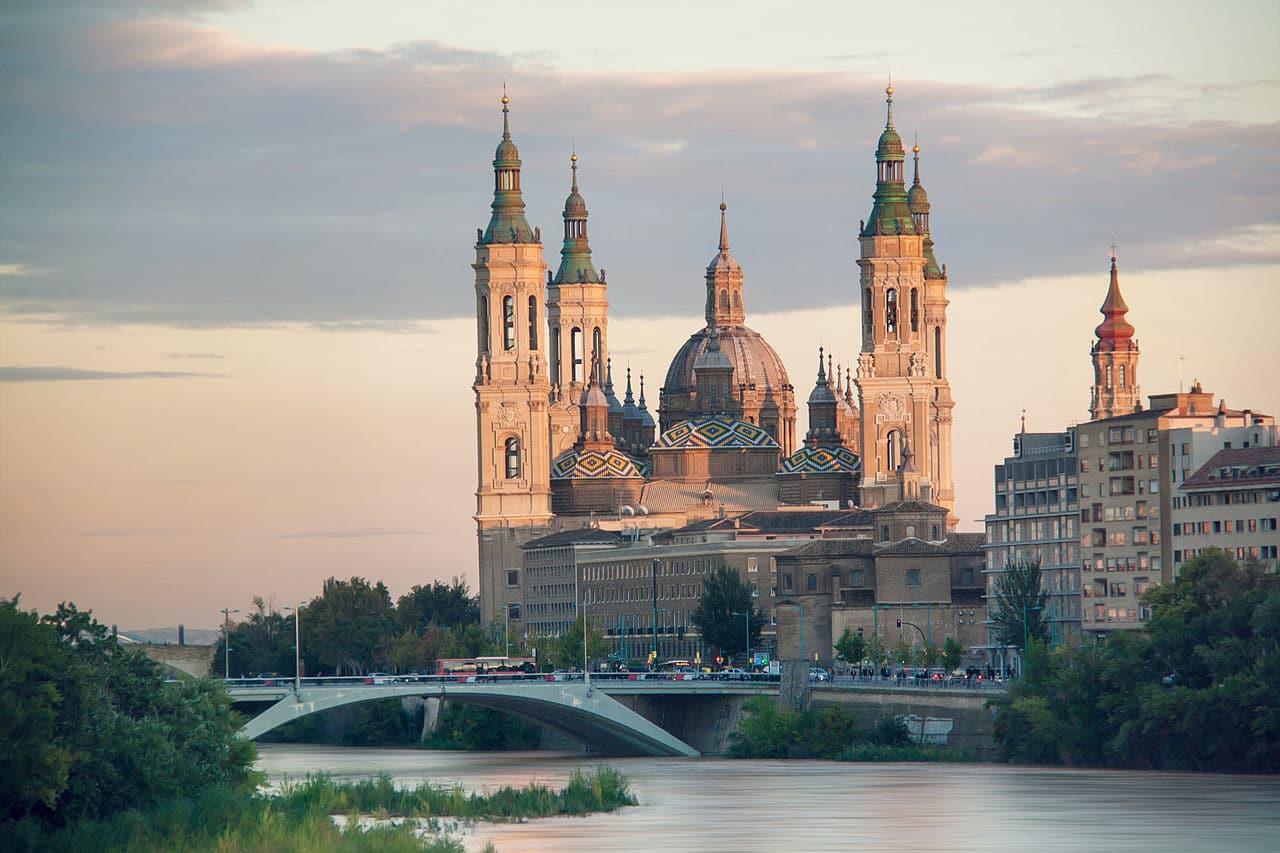
The largest cities in Spain are concentrated, above all, in the south and east of the country. However, to these must be added Madrid, which, in addition to the capital, is the most populated of all. But you also have them in the north, where Bilbao o Vigo They have several hundred thousand inhabitants.
On the other hand, when talking about its inhabitants, we will focus on what marks its municipal census. This may add more neighbors than they have because it can include other localities that are part of the council, but it is a more rigorous data than others. Once we have clarified this point, we are going to show you the largest cities in Spain.
Madrid

Plaza Mayor in Madrid, one of the symbols of the largest city in Spain
The Spanish capital had a population census in January 2021 of 3 305 408 inhabitants, which means that it is the largest in the country. Likewise, its metropolitan area is the third largest in Europe, just behind Paris y London. To a large extent, this is due to the fact that it houses the most important state and economic organizations. And this translates into offering better job prospects.
But it also has wonderful monuments and museums. It would be impossible for us to tell you about everyone here. But, as one of the great symbols, we will mention the Plaza Mayor, which is one of the most beautiful in Spain. It is dominated by the equestrian statue of Philip III and you should also pay attention to the Knife Bow or the call Bakery House.
Equally representative of Madrid is the Royal Palace with the indispensable and necessary Sabatini Gardens. It was built in the XNUMXth century to replace the old Alcázar, destroyed by fire. And, next to it, you have the no less spectacular Cathedral of the Almudena. As for the museums, it stands out above all the Prado, one of the most important art galleries in the world. Finally, go to the Puerta del Sol, where is the Post House and walk through the Gran Vía looking at the sky to appreciate its beautiful modernist buildings.
Barcelona

The Sagrada Familia, work of Antonio Gaudí
As we were saying, we already have to move to the east of the country to find the second largest city in Spain. As of January 2021, XNUMX, the Ciudad Condal had 1 636 732 inhabitants. However, if we take its entire metropolitan area, it would reach almost three and a half million. Of course, this includes numerous localities such as Hospitalet de Llobregat, with almost three hundred thousand inhabitants, or San Cugat del Valles with about a hundred thousand.
In any case, Barcelona also offers you wonderful monuments. One of its great symbols is the Sagrada Familia, catholic basilica designed by the great architect Antonio Gaudi. Other jewels of the city are also due to this, such as the Park Güell or Mila and Batlló houses. For its part, Barcelona's cathedral It is a marvel of Gothic and is located in the historic center. To this belong also the famous Ramblas walk, where you can see the Teatro del Liceo, the Boquería Market and the Palacio de la Virreina.
But the city still has other wonders. Some are in Montjuic and were built for Universal Exhibition of 1929. It is the case of the precious National Palace, which today houses the Art Museum of Catalonia; of Spanish village, which recreates typical homes from all regions of the country; of the spectacular Magic Fountain or the imposing columns designed by Josep Puig i CadafalchNot forgetting the Arc de Triomphe that served as the entrance to the exhibition and was created by Joseph Vilaseca.
Valencia

The Torres de Serranos of the old wall of Valencia
We continue our tour of the largest cities in Spain without leaving the east of the country. We thus arrive at the third, located in the Spanish Levante. Valencia has 789 744 inhabitants, if we also take the data for January 2021. Of course, as was the case with Barcelona, its metropolitan area reaches the figure of 1 inhabitants due to the fact that it includes municipalities such as Torrent, with almost ninety thousand, or Paterna with about seventy thousand.
In what the Levantine city is not lagging behind compared to the previous ones is in terms of monuments and museums. Not surprisingly, its old town, full of spectacular buildings, is one of the largest in Spain, with some one hundred and seventy hectares. It is still delimited by parts of the old medieval wall that conserves two of its doors. One of them is that of the Quart Towers, but more famous is the other. It is made up of Serranos Towers, two spectacular polygonal fortifications joined by a body in which there is a semicircular arch. They are one of the symbols of the Levantine city.
So is your cathedral, built in the XNUMXth century following the canons of Valencian Gothic, although it also has Romanesque, classicist and baroque elements. One of its most outstanding elements is the Miguelete Tower, which also belongs to the first style, although it was built a century later. But the cathedral is not the only temple you can see in the city. We also advise you to visit the Basilica of the Virgin, a baroque jewel; the Saint Nicholas parish, baptized as "The Valencian Sistine Chapel" for the frescoes on its ceiling; the Church of Santa Catalina Martir or monastery of San Miguel de los Reyes.
Also gothic is the Lonja de la Seda, built at the end of the XNUMXth century and declared a World Heritage Site. Finally, you must visit in the city the Museum of Fine Arts, Valencian Museum of Illustration and Modernity and, above all, the spectacular City of Arts and Sciences, with its spectacular architecture.
Seville, Andalusian representative among the largest cities in Spain

The spectacular Plaza de España in Seville
The fourth place among the largest cities in Spain is occupied by the Andalusian capital. In your case, you have 684 234 inhabitants, although its metropolitan area reaches almost two million, since it has 46 municipalities. Also its old town is one of the largest in Spain, with about four square kilometers.
In it, the spectacular cathedral, a Gothic marvel that is the largest temple of its kind in the world. Built in the fifteenth century, in it are buried Peter the Cruel, Catholic kings, Christopher Columbus, Ferdinand III the Saint o Alfonso X the Wise. But its most characteristic element is the singular Giralda, minaret of the old mosque to which the precious Patio de los Naranjos.
While you visit the temple, you should also see the Real Alcazar, a spectacular palace complex that combines Gothic, Mudejar, Renaissance and Baroque elements. And we say the same to you about the Archivo de Indias, a construction due to Juan de Herrera. For its part, tower of Gold It is another of the symbols of the city and was built in the XNUMXth century.
Against the latter you have the typical neighborhood of Triana, which is accessed by the homonymous bridge. In this you can see monuments such as the churches of Nuestra Señora de la O and San Jacinto or the Casa de los Mensaque, without forgetting the old neighborhood corrals similar to those of Madrid. Also, it's very nice Santa Cruz neighborhood, with its white houses adorned with tiles.
Finally, you have to see in the city the Maria Luisa Park and Plaza of Spain, an architectural marvel of regionalist style built for the Ibero-American Exhibition of 1929. Its authors were the architects Hannibal Gonzalez y Vincent Traver and its semicircular shape represents the embrace between Spain and the nations of Latin America.
Zaragoza

View of the Basilica del Pilar, in Zaragoza, one of the largest cities in Spain
We end our tour of Spain's largest cities in Zaragoza, which has a population of 675 301 inhabitants. Founded by the Romans on an old Sedetana town and bathed by the Ebro river, it is, therefore, the fifth largest city in our country by population.
The great symbol of Zaragoza is the Cathedral Basilica of Our Lady of the Pillar, which is the largest baroque temple in Spain. It was built at the beginning of the XNUMXth century and reformed at the end of that same century. Therefore, it also has neoclassical elements. But, if it is spectacular on the outside, it is no less so on the inside. It has frescoes of Goya and Mariano Bayeu, the call Holy Chapel, work of Ventura Rodríguez, and with a beautiful main altarpiece due to Damien Forment.
In front of the Pilar, you have the old cathedral or seo del savior. This was built in the XNUMXth century following the Romanesque canons. But it has also undergone numerous subsequent extensions that have added Gothic, Renaissance and Baroque features. It was built on the old mosque, of which the minaret has been preserved and it also highlights the parish, an impressive funerary chapel in the Mudejar style.
Likewise, next to both cathedrals is the Zaragoza Market, a beautiful Aragonese Renaissance-style building built at the beginning of the XNUMXth century. However, if we talk about civil architecture in Zaragoza, its most spectacular wonder is the Palace of the Aljafería, a Muslim fortress built in the XNUMXth century. As with other monuments, if it is spectacular on the outside, it is even more so on the inside. Among the jewels it houses are the Golden Room, the Patio de Santa Isabel or the Throne Room.
In conclusion, we have shown you the largest cities in Spain. After the five that we have visited come Málaga, with almost six hundred thousand inhabitants; Murcia, which borders on five hundred thousand, and Palma de Mallorca with about four hundred and twenty thousand. Do not you think cities worth visiting?